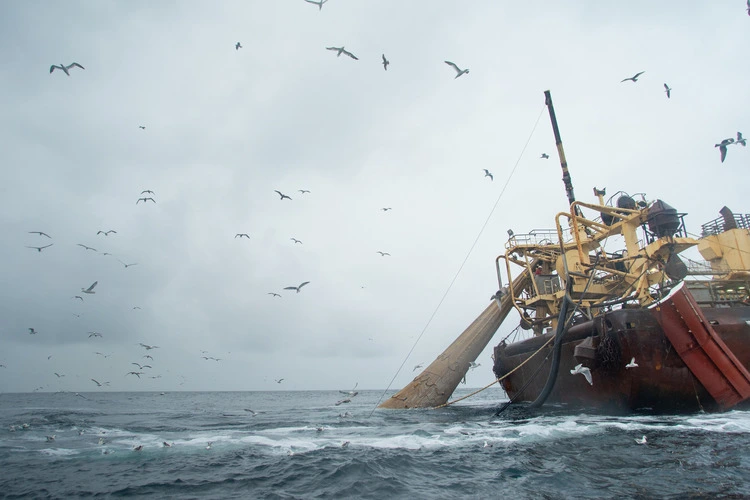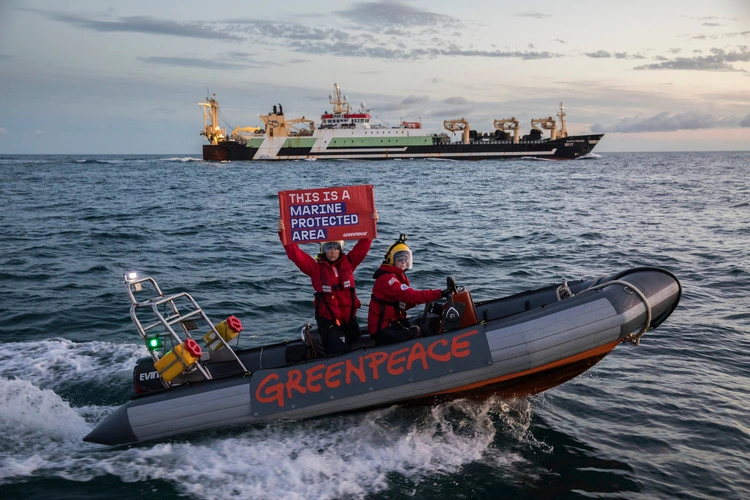
Greenpeace investigation finds vast scale of supertrawler activity in UK marine-protected waters between 2020 and 2025
By
A new investigation by Greenpeace UK has revealed giant supertrawlers continue to catch fish in the UK’s Marine Protected Areas with disastrous consequences to surrounding wildlife, even though the UK government have had the powers to stop them since Brexit.
Between January 2020 and January 2025, 26 supertrawlers – the majority of which were foreign-flagged and sold most of their catch overseas – were recorded spending significant time fishing in 44 of the UK’s offshore Marine Protected Areas (MPAs). In total, these vessels spent approximately 4.2 years – almost 37,000 hours – fishing in the last five years alone, equivalent to 7,380 hours each year.
Enjoying this article? Check out our related reads:
The supertrawler found to be spending the most time in UK waters was one flagged to the Netherlands, followed by vessels from Lithuania, Germany and a further two Dutch vessels.
What are supertrawlers and why are they so damaging?
Supertrawlers get their name from their vast size, measuring more than 100m in length. In a single day, they are able to use enormous nets to catch hundreds of tonnes of fish such as herring and blue whitting. However, due to their sheer scale, supertrawlers also catch large amounts of bycatch – animals not meant to be caught – such as dolphins, seals, rays and sharks.
The destructive industrial fishing methods used by supertrawlers serve to only hinder the intended goals of MPAs: to make areas of ocean ‘protected sites’ meant to conserve habitats, species and processes essential for healthy marine ecosystems. And that’s without considering other harmful fishing activities that occur within the proximity of the sites, like bottom trawling – the process of dragging weighted nets along the seabed, often damaging ecosystems and leading to high levels of bycatch.
Together, these invasive processes in MPAs can have disastrous consequences.

Since leaving the EU, the UK has had the option to exert a ban on supertrawlers from operating in its waters, but has not yet done so. Removing supertrawlers, explains Greenpeace, would not necessarily be difficult: back in 2023, Russian flagged supertrawlers left UK MPA’s very quickly, showing how with political will, decisive action can be made.
What is being done to help?
Already, 750,000 people have expressed their support for the UK government to ban the vessels, alongside other destructive fishing boats, from UK MPAs. In doing so, it is hoped that the UK can then meet its 30×30 goal: ensuring at least 30 per cent of the country’s waters, and 30 per cent of global oceans, are fully protected by 2030.
If left alone, MPAs can help to revitalise vast areas of the ocean: studies of both Lyme Bay MPA in the UK and Cabo Pulmo National Marine Park in Mexico found a whole site approach to MPA protection can boost abundance and diversity of fish populations by as much as 400 per cent.
‘The government is failing our protected seas. Marine Protected Areas should be places for fish, marine biodiversity and habitats to rest and recover from the damage caused by human activities,’ said oceans campaigner at Greenpeace UK Erica Finnie. ‘But the government is making a mockery of our MPAs by allowing these places to be routinely fished – despite having had the powers to ban industrial fishing vessels from protected waters since we left the EU.’
‘By allowing industrial fishing to continue in our protected areas, the government is degrading entire MPAs from the north of Scotland to the south of Cornwall. To be taken seriously as a leader on ocean protection, the UK government must ban supertrawlers, and other types of industrial fishing, from our Marine Protected Areas,’ Finnie continued.




